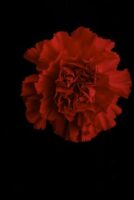The Noisiest Paintings Of Silence
THE NOISIEST PAINTINGS OF SILENCE
Silence… the opposite of nothingness… Silence, which sometimes expresses what words cannot, finds its manifestation most in art. Silence is timeless. That’s why Gabriel Marcel says, “it is possible to say that the word comes from the blessing of silence and that silence gives it legitimacy.”
Throughout history, the image has told a lot without talking. For this reason, it appeals to the human eye and pushes people into deep contemplation. The soul of many things is not in words. Painting is also born from silence. All paintings are quiet, yet some paintings are quieter than others, requiring much more reflection. In Lessing’s words, “painting is a silent poem”. Now let’s dive into the depths of some silent poems together…
Leonardo da Vinci’s “Virgin of the Rocks” painting, one of the most magnificent examples of Christian art, is one of the few works in which the silence in the soul of Mary can be heard by the viewer. Despite its intense theme and hunger for analysis, the work does not lose its interiority and depth, and creates a great noise with its silence. Maybe it is not a painting of silence, but it is one of the paintings that says a lot with its silence.

In Dutch painting, where the volatility of the Renaissance was left behind and the themes became heavier and quieter, The painters whose paintings’ silence is most felt are undoubtedly Vermeer and Rembrandt. Vermeer’s iconic work “Girl with a Pearl Earring” and Rembrandt’s “the Storm on the Sea of Galilee” are paintings that should be listened to more rather than standing in front of them and watching them. Girl with a Pearl Earring, also known as the Mona Lisa of the North, is a desperate yet effective painting in which silence intensifies in loneliness. The Storm on the Sea of Galilee, whose noise-filled silence imprisons the viewer, emphasizes the power of darkness as if it informs the last silence felt by humanity before lightning and thunder. Paul Claudel considers Rembrandt’s works as paintings of silence. In fact, this strong silence dominates all Dutch paintings that peaked in the Baroque period. Especially the “Vanitas”[1] paintings of the period are the paintings that make you feel the suffocation of silence the most. Artworks that remind the viewer of the brevity and fragility of life and include symbols such as skulls and extinguished candles prompt the viewer to mentally imagine the concept of memento mori[2], which is closely associated with silence. Vanitas paintings, a type of still life, also include other symbols such as musical instruments, wine, and books that remind us of the futility of worldly pleasures and goods. This is exactly why Vanitas paintings have become typical symbols of the school of silence. In this sense, the 17th century is a period when images turned into silent poetry through contemplation.
There are also paintings where silence meets spirituality. Caspar David Friedrich’s “Wanderer on the Sea of Fog”, painted as a reflection of unity and vastness, is, in my opinion, the quietest painting in the history of art, containing a series of pathos[3]. The silence here comes from loneliness. The figure representing loneliness on the rocks has turned into a symbol that both challenges the world and shakes the heavens and earth with its silent screams by being alone with its self. The wandering figure here is the loudest representation of silence in the history of images, in which every viewer can find a piece of themselves. I wonder if this traveler, who lost all the innocence of his feelings by experiencing silence, found peace in his own loneliness?

Jean François Millet’s “Angelus”, in which beings and objects are constantly faded away, and Bouguerau’s “Birth of Venus” works, in which the word of silence is felt to the core with its dazzling colors, have taken their place in the silence school of painting history as muta eloquentia.[4]
Let’s look at the painting “Absent Drinkers” by Edgar Degas, which is symbolized as the contemplation of despair. Degas, who depicted a place that would be considered noisy, incorporated silence into the painting with all its contrast. While the man wearing a hat is looking towards the right side of the canvas, the seriously dressed woman wearing a hat is looking down absently. The painting is almost a representation of the social loneliness that occurred during the industrial development of Paris. Here, in fact, there is a single silence of two loneliness. Likewise, Pierre Bonard’s “Man and Woman” is a work in which the loaded loneliness of two familiar souls deepens with a silent scream.
Paintings that we can call the absolute silence of nothingness were undoubtedly created by symbolists. Arnold Böcklin’s “Isle of the Dead” series is also the quietest of symbolist paintings. This is a series that is dark but also bright, silent but also talking. The Isle of the Dead symbolizes death as well as silence. That’s why, when we look at a painting, we feel fear as well as peace, pessimism as well as relief. The Isle of the Dead, which makes the audience feel perhaps the most mixed emotions with its silence, is a melancholic, ecstatic and eternal painting.
Does the same ecstasy apply to modern paintings that radically separate silence from the divine perspective? How has “silence”, which has been universally the same for centuries, changed over time? René Magritte, perhaps one of the painters most affected by Friedrich’s loneliness, although a surrealist, handled silence in different ways with a series of 27 paintings called “Empire of Light”. It wouldn’t be wrong to say that these paintings are paintings of intense silence. As in Böcklin, the contrast in the meeting of darkness and light; We witness a penetrating, lonely and touching manifestation in these paintings. When we look at it, it may not immediately come to mind that a surrealist painting can evoke silence and loneliness. But surrealism is perhaps the movement in which the intensity of emotion emerges most spontaneously in the history of art. This is where its difference from romanticism, which is a movement of emotions, comes into play.
Both movements portray silence in different ways. While romanticism needs to visualize emotions directly, but intensifying them, in the form of speaking paintings, surrealism kills the emotion to be expressed in silence and transfers it to the painting indirectly, with images that are very different or unrelated to what is imagined. If we go back to Millet’s work “Angelus”, we see very clearly in the painting the definition we call “killing emotion with silence” for Dali, who brought a different interpretation to this painting. Millet is a realist, but he directly depicted the Angelus, a devotional scene, in all its depth. For Dali, who reinterprets it, the Angelus experience is different. In Dali’s brush, we see a depiction of Angelus who has lost his purity and silence and has become a giant. It is much louder and more shocking than Millet’s Angelus. We see a trace of this shocking silence in van Gogh’s paintings. These paintings, which often appear to be cheerful compositions with their vibrant colours, may have emerged from a more melancholic foundation as the artist’s life story is understood. Van Gogh, who especially reveals the emotions evoked by the silence of empty or lonely spaces, almost surrendering himself to the darkness of silence in these spaces in his paintings, described this surrender in his painting “Bedroom in Arles” at one point. Although it is a very bright and colorful painting, this work is an image of loneliness. The way two chairs, a coffee table, a few paintings hung on the wall and the bed are depicted do not make the work ordinary, on the contrary, it specializes it. The portraits on the right side of the wall make the painting even more desolate, pushing the viewer to literally enter the painting and experience that place and moment. The experience of silence in this painting is handled in a much more realistic way than in many of the works we have mentioned so far. The reason for this stems from the bond the artist establishes between this silence and his own soul and brush. Because a lonely soul always writes silent poems.
Edward Hopper, who paints the silence between beings in American realistic painting, not only focuses on loneliness in his works, but also places a strong emphasis on the distance between men and women. In Hopper’s works, couples stay away from each other and are busy with their own business.
There are many more artists in art history who produce works on the themes of loneliness and silence. Eugène Delacroix, who has the most expressive brush of the Romantic painters, and perhaps Nicolas Poussin, who conveys the divine word and the inner word in his paintings most fluently, are among the painters who thrive on silence the most. All these artists we mentioned went on an inner journey during their creation process and experienced the communication of silence. Let’s end with the words of François Mauriac: “All great works are born of silence and return to it (…) Just like the Rhône River passing through Lake Geneva, a river of silence passes through Combray and the salon of the Guermantes without infecting them.”
[1] The tradition of painting based on 16th century Dutch art and depicting death objects is called vanitas.
[2] Latin phrase meaning ‘Remember that you must die’
[3] In Greek, touching feature.
[4] Quiet eloquence. In addition, the basic principle of contemplation skill in the early Christian period.
Nazperi YILMAZ











